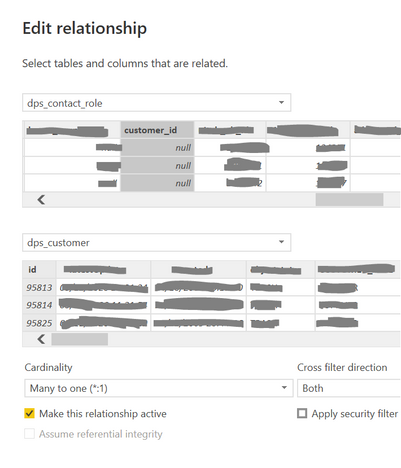FabCon is coming to Atlanta
Join us at FabCon Atlanta from March 16 - 20, 2026, for the ultimate Fabric, Power BI, AI and SQL community-led event. Save $200 with code FABCOMM.
Register now!- Power BI forums
- Get Help with Power BI
- Desktop
- Service
- Report Server
- Power Query
- Mobile Apps
- Developer
- DAX Commands and Tips
- Custom Visuals Development Discussion
- Health and Life Sciences
- Power BI Spanish forums
- Translated Spanish Desktop
- Training and Consulting
- Instructor Led Training
- Dashboard in a Day for Women, by Women
- Galleries
- Data Stories Gallery
- Themes Gallery
- Contests Gallery
- QuickViz Gallery
- Quick Measures Gallery
- Visual Calculations Gallery
- Notebook Gallery
- Translytical Task Flow Gallery
- TMDL Gallery
- R Script Showcase
- Webinars and Video Gallery
- Ideas
- Custom Visuals Ideas (read-only)
- Issues
- Issues
- Events
- Upcoming Events
The Power BI Data Visualization World Championships is back! Get ahead of the game and start preparing now! Learn more
- Power BI forums
- Forums
- Get Help with Power BI
- Desktop
- RELATED function for Many to One relationship does...
- Subscribe to RSS Feed
- Mark Topic as New
- Mark Topic as Read
- Float this Topic for Current User
- Bookmark
- Subscribe
- Printer Friendly Page
- Mark as New
- Bookmark
- Subscribe
- Mute
- Subscribe to RSS Feed
- Permalink
- Report Inappropriate Content
RELATED function for Many to One relationship doesn't work. How else to create a calculated column?
Hi everyone,
I have 2 tables (dps_contact_role and dps_customer) related to each other like this:
I am trying to calculate how many customers are missing customer contact ID (which is called contactidentity_id in dps_contact_role_ table). To be more precise I need to visualise using Pie chart, how many customers HAVE customer contact ID in the system and how many are MISSING it.
I am creating calculated columns in the table dps_customer:
Because relationship are Many to One and I am creating the column in lookup table, RELATED function doesn't work. But I have created similar columns for other pie charts where relationship is reverse (where customer table is the fact table) and it worked perfectly.
I am a bit confused now. How else can I create a column in customer table for my purpose if I cannot change relationships and I cannot create a column in another table?
Thanks in advance!!
Solved! Go to Solution.
- Mark as New
- Bookmark
- Subscribe
- Mute
- Subscribe to RSS Feed
- Permalink
- Report Inappropriate Content
Hi @Anonymous ,
You can created a calculated column as below in the table 'dps_customer' to get it, please find the details in the attachment.
Customer Contact =
VAR _ciid =
CALCULATE (
MAX ( 'dps_contact_role'[contactidentity_id] ),
FILTER (
'dps_contact_role',
'dps_contact_role'[cutomer_id] = EARLIER ( 'dps_customer'[id] )
)
)
RETURN
IF ( _ciid = BLANK (), "Contact Missing", "Contact OK" )In addition, you can review the blogs below to know the applied scenario of RELATED function...
Best Regards
- Mark as New
- Bookmark
- Subscribe
- Mute
- Subscribe to RSS Feed
- Permalink
- Report Inappropriate Content
Hi @Anonymous ,
You can created a calculated column as below in the table 'dps_customer' to get it, please find the details in the attachment.
Customer Contact =
VAR _ciid =
CALCULATE (
MAX ( 'dps_contact_role'[contactidentity_id] ),
FILTER (
'dps_contact_role',
'dps_contact_role'[cutomer_id] = EARLIER ( 'dps_customer'[id] )
)
)
RETURN
IF ( _ciid = BLANK (), "Contact Missing", "Contact OK" )In addition, you can review the blogs below to know the applied scenario of RELATED function...
Best Regards
- Mark as New
- Bookmark
- Subscribe
- Mute
- Subscribe to RSS Feed
- Permalink
- Report Inappropriate Content
@Anonymous HUGE thanks!! That solution worked perfectly 🙂
- Mark as New
- Bookmark
- Subscribe
- Mute
- Subscribe to RSS Feed
- Permalink
- Report Inappropriate Content
If you sit at the M side of a M:1 relationship you can use RELATED as it will always return one or zero results. For all other scenarios you need to use RELATEDTABLE and then boil the result down to a scalar value.
- Mark as New
- Bookmark
- Subscribe
- Mute
- Subscribe to RSS Feed
- Permalink
- Report Inappropriate Content
thanks @lbendlin
I sit on 1 side, not M (that's the problem). But how could I use RELATEDTABLE in this case? if you could help with that
Thanks
Helpful resources

Power BI Dataviz World Championships
The Power BI Data Visualization World Championships is back! Get ahead of the game and start preparing now!

| User | Count |
|---|---|
| 38 | |
| 36 | |
| 33 | |
| 32 | |
| 29 |
| User | Count |
|---|---|
| 129 | |
| 88 | |
| 79 | |
| 68 | |
| 63 |



